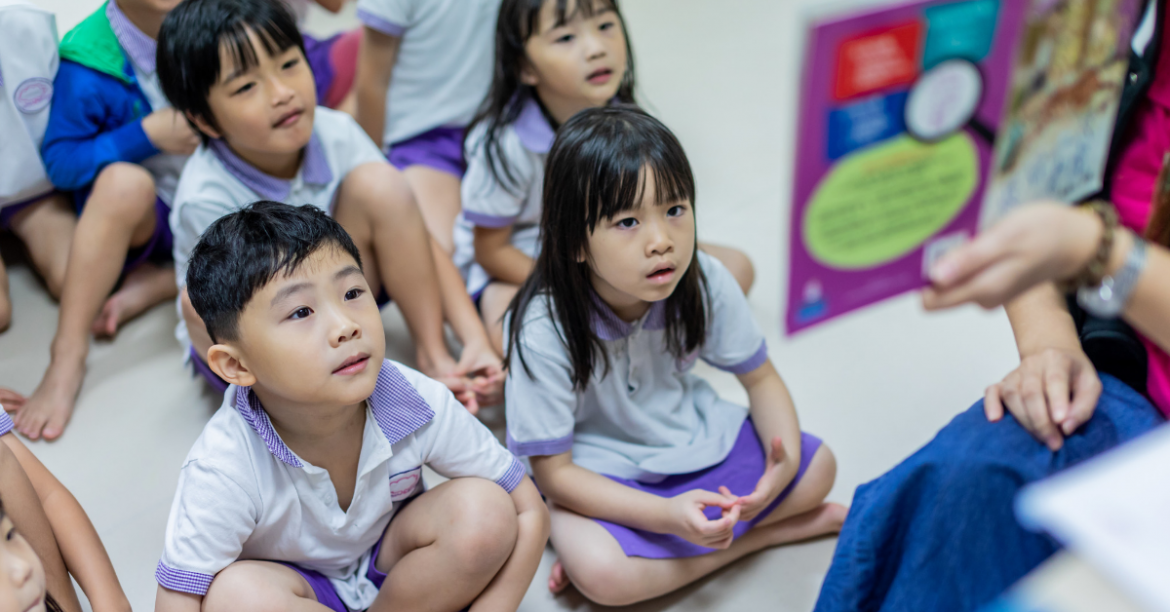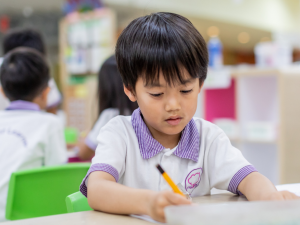
This article is written in collaboration between Mulberry Learning and NUS Infant and Child Language Centre.
Raising bilingual children can be incredibly rewarding. Bilingual children have access to new cultural horizons and a wealth of new experiences on account of knowing more than one language. However, building bilingual proficiency can be challenging. Parents often wonder what works and what does not work. Fortunately, childhood bilingualism is a very active area of scientific research both in NUS’s laboratory and in laboratories around the world. So, what does the science tell us?
1. Motivated learners are successful learners.
One of the most significant challenges in building up our children’s proficiency in another languages is building up their motivation to learn another language. It is important for families to make each language equally engaging, relevant and useful for the child. If a child associates one language with socializing, play, and daily communication and the other language with repetitive drilling, a child may rapidly lose motivation to acquire the less engaging language. This motivation gap between the languages can lead to a proficiency gap, where the second language is less likely to be successfully acquired.
In building up second language proficiency, it is important to build motivation through the eyes of a child: what will he/she lose if he/she does not speak the second language? Some strategies for success include working from your child’s existing interests. Does your child have a special interest in mythological characters and stories and can these stories be introduced in the mother tongue? Does your child enjoy music and dance? Can these activities be introduced and sustained in the mother tongue? Parents can also seek out special cultural practices and events that take place in the mother tongue. Most important of all, parents should invite social opportunities for using the second language that the child looks forward to and in which the child actively participates.
2. Start early
In general, children who acquire two languages early in life fare better at bilingualism than those who wait. However, there is no magic window of time after which bilingualism becomes impossible. Some aspects of second language learning, specifically, the grammar and accent, are easier to acquire early in life and can help a child sound more like a native speaker.
However, research shows us that motivation trumps age in being a successful bilingual. Highly motivated, later learners do better at bilingualism than early learners who lose their motivation along the way. In terms of when to start, it’s never too early to start. However, it is important to keep in mind that bilingualism is a ‘long game’. An early start must be followed by sustained engagement with the second language. If not, a child may become a ‘lapsed bilingual’ where early bilingual proficiency eventually leads into monolingualism.
3. Quantity and quality matter
Quite simply, the more your child hears a second language, the more they will learn. A child who hears English 90% of the time and Mandarin 10% of the time will almost certainly not become a balanced bilingual who has equal knowledge of both languages.
However, quality matters too. A child who receives plenty of native language input in English through daily interactions and equal amounts of input in Mandarin via TV shows will probably not become a balanced bilingual. To become bilingual, children need the sort of input in their second language that they receive in their first language. That is, they need to hear input by people who have native proficiency in that language. Non-native speakers with good proficiency can help to support the use of the second language, but the primary source of input should come from a speaker with native proficiency. Also, children who receive second language input from a larger variety of speakers do better than those who only receive input from one speaker.
In addition, children need opportunities to engage and converse in the language. If one language is the language of play and socializing and the second language is taken in entirely through textbooks, there is an imbalance in the opportunities for active engagement in each language. This will take a toll on bilingualism. Finally, children also need to receive second language input that is developmentally appropriate for their individual level of proficiency.
There is a commonly held belief that bilingual children need to receive each language from a different parent. There is no scientific support for this belief. Large-scale studies show us that children learn two languages with one-parent/one-language as effectively as they learn with two bilingual parents. In fact, the families that do best in the long term with bilingualism are those where both parents speak the mother tongue at home as this balances out the significant input children receive in the community language at school and with friends.
4. What to do if your child refuses to use the second language?
Research shows us that many children develop a preference for the peer language or community language. For many children in Singapore, that language is English. This a very common preference. Here, parents must strike a balance. Forcing the child to use the mother tongue can backfire. However, encouraging the child is worthwhile – active bilinguals (who use both languages when speaking) fare better than passive bilinguals (bilinguals who understand both languages but only use one).
Try to encourage and support your child’s active use of both language, and more importantly, try to avoid slipping into the community language yourself (e.g. English) at home. Parents who persist and keep up the mother tongue at home provide valuable continued support for the second language.
If you and your child would like to participate in research studies in language development, sign up at http://blog.nus.edu.sg/babytalk/enquiries/. The studies are short (about 15 minutes) and entertaining for children. NUS Infant and Child Language Centre tests children between 6 months and 4 years and offer a free language/cognitive assessment.
Article Written By:
Leher Singh, Ph.D.
Director, NUS Infant and Child Language Centre
Associate Professor of Psychology
National University of Singapore



